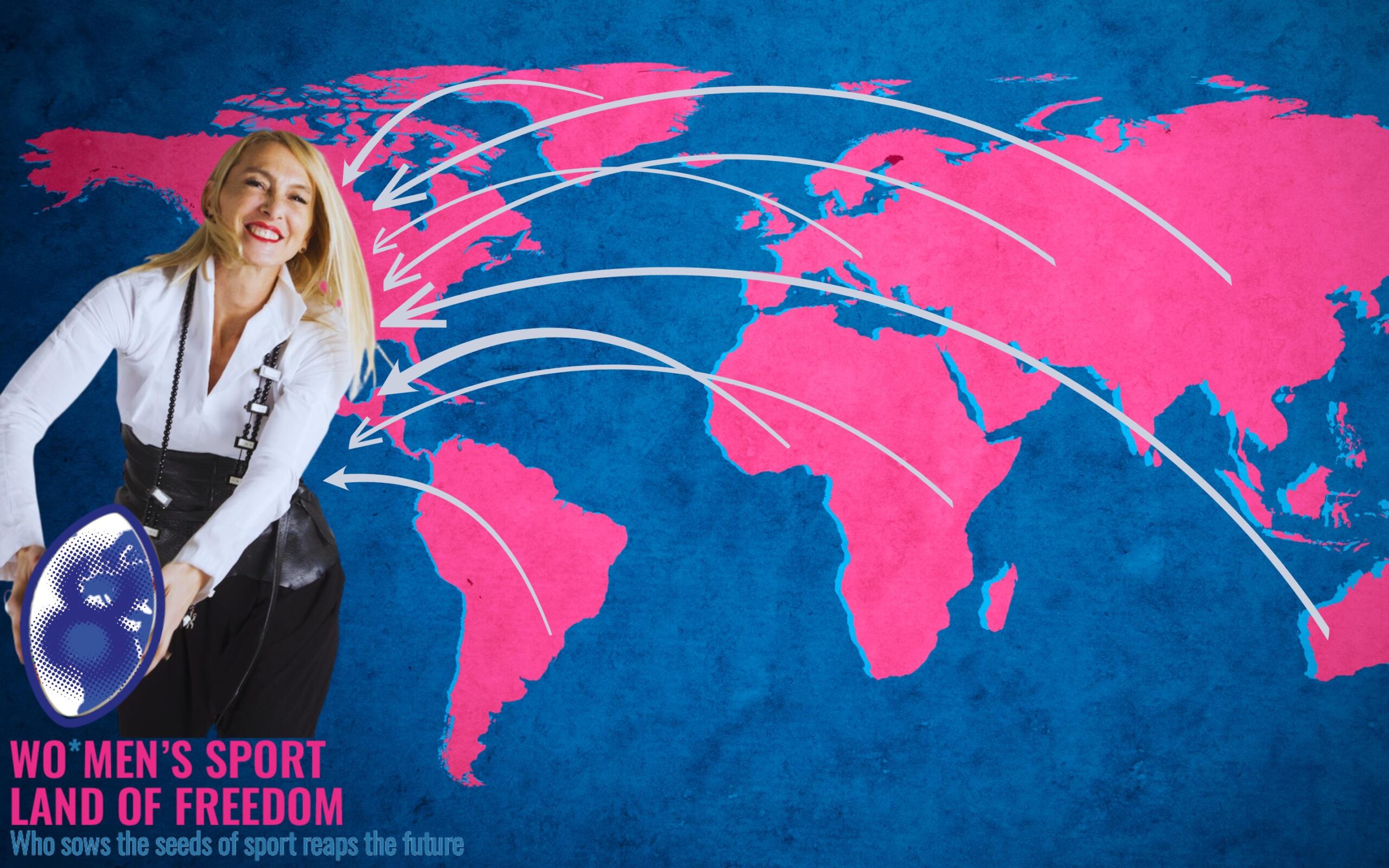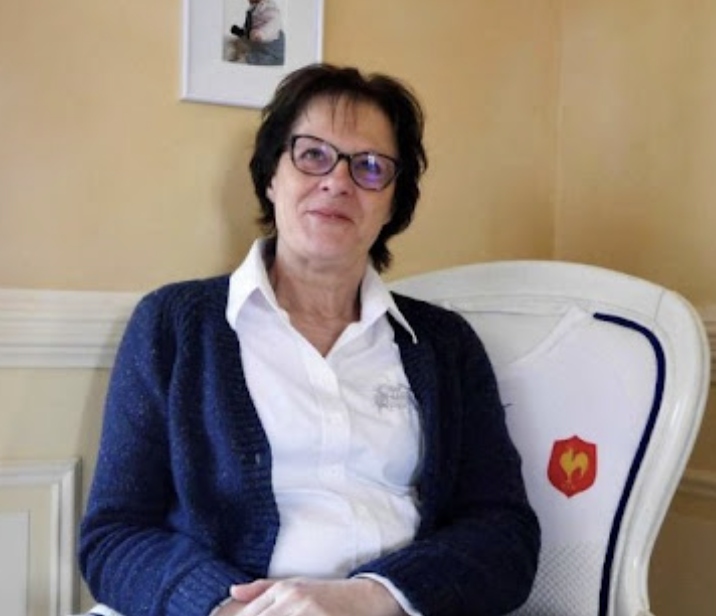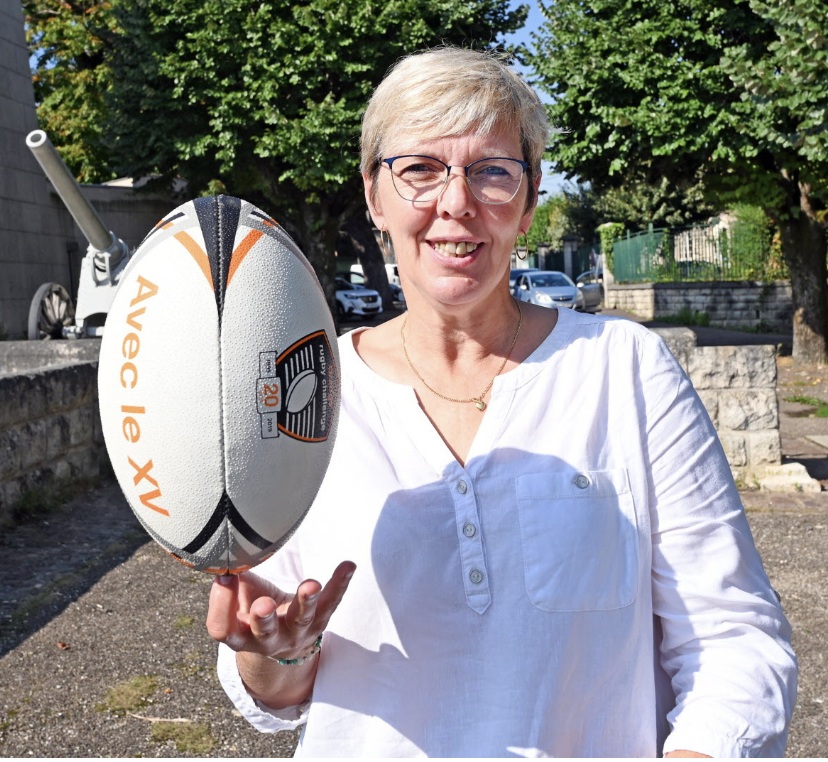
FRANCE: PERHAPS RUGBY EVEN SAVED ME.
“Perhaps rugby even saved me”
Brigitte Juglay

Mercier Pascale

Thanks to:
Mercier Pacale
Vice President of the French Rugby Federation with responsibility for the women’s game
Brigitte Juglay
Past Vice President of the French Rugby Federation with responsibility for the women’s game, Member of World Rugby
- The history of the women’s movement in France
- Testimonials
- Reading Time: 10 minutes
FRANCE - Find out more
France is a parliamentary republic in Western Europe with about 68.4 million inhabitants in 2024 and a slight female majority. Women hold 37.3% of parliamentary seats and participate in the labor force at 52.6%, compared to 61.8% of men. The country has a solid legal framework for gender equality, but wage disparities and underrepresentation in private sector leadership positions persist. (SOURCE: data.unwomen.org; World Bank Gender Data Portal; IPU Parline; INSEE)
HISTORY OF THE COUNTRY
1. When did the women’s rugby movement start in your country and what is its history? How is rugby structured in your country?
1912. The roaring years of “barette.” In France, at the end of the 19th century, school-based sport, serving the construction of the Republic, gave rise to a form of rugby without tackling, called barette, and to a few women’s matches. In 1912, in Paris at the Élisabeth Stadium near Porte d’Orléans, the first women’s multisport club, Fémina Sport, was born. The club flourished after 1918, at the end of the First World War, which had mobilized men and sparked a first wave of emancipation for the women left behind.In 1917, Alice Milliat created the Fédération des Sociétés Féminines Sportives de France, the origin of the first Olympic Games reserved for women, organized in Monte-Carlo in 1922. In this new context, barette, which was gradually evolving towards rugby, developed within Fémina Sport from 1920 thanks to Marie Houdré, a doctor by profession, supported by André Theuriet, a national team player for SCUF. The Hirondelles de Paris also emerged. Women’s sections were inaugurated in other Parisian clubs such as Les Cadettes de Gascogne, Nova-Fémina, La Ruche, ASPTT Paris, and the Union Sportive Athlétique Clodoaldienne. In the provinces, beyond occasional matches in various towns, teams were formed in Toulouse, Bordeaux, Nancy, Lorient, and Lille, whose athletes were crowned champions of France in 1924. A document from the 1920s shows an example of a barette team: 12 players, 6 forwards, 2 half-backs, 4 three-quarters, and 1 fullback. Their field: 80m x 55m. Main rules of the game: Drop-kicks allowed in play / Lineouts restarted by the opposing scrum-half, throwing the ball towards the line of players / Scrums without pushing / Dribbling, tackles to legs and head forbidden / Holding and waist-high tackles permitted. In 1923, the young French Rugby Federation prohibited its clubs from admitting female players. At the beginning of the 1930s, what could now be considered women’s rugby was attracting several thousand spectators to some matches and generating good revenue. Yet the discipline paradoxically self-sabotaged! Overwhelmed by social pressure, its numbers collapsed, much like women’s football, until both were struck off the register of the Fédération des Sociétés Sportives Féminines de France. Thus began a long eclipse for women’s rugby. “The great fight of the French women’s XV.” Borrowed from Denis Lalanne’s 1959 mythical work, this phrase can be applied to the struggle women’s rugby faced at a time when the broader fight for gender equality was taking shape in French society. The statutes of the International Board specified that its leaders and players were “exclusively male.” In France, where clubs were forbidden to form women’s sections, the Secretary of State for Youth, Marceau Crespin, stated in 1972 that rugby seemed to him entirely unsuitable for women. In the 1960s, gathering women on a pitch was possible only on exceptional occasions — for charity fundraisers or village festivals! Success was, however, guaranteed. Crowds (mostly male!) flocked to watch what they expected to be “brawls,” only to be surprised and eventually won over by the technical quality and play shown by the women. Archival footage from INA (Institut National de l’Audiovisuel) shows matches at Miramont de Guyenne (1959), Aquitaine (1964), Dinard (1965), and Limoges (1966). In this context of one-off events, often without continuity or club creation, some dates became historic. A recognition agreement was concluded in 1979 and reinforced in 1982. Women’s rugby was no longer “outlawed.” AFRF became the Fédération Française de Rugby Féminin in 1984. July 7–8, 1989: At its congress in Bordeaux, the French Rugby Federation (FFR) voted to integrate women’s rugby and appointed Marc Gosse as president of the new women’s committee. Today, French women’s rugby is one of the most developed in the world, with a well-structured club and championship system that continues to evolve. It now counts 45,000 registered players.
- Élite 1: The top division, currently composed of 16 teams split into two pools. The best advance to the playoffs for the national title.
- Élite 2: The second national division.
- Fédérale 1, 2, and 3: Below Élite 2, the federal categories, managed nationally.
- Regional Championships: Divisions Reg. 1, 2, and 3, representing the grassroots level, managed by local leagues.
2. Do you think playing rugby has a social impact for women in your country?
Yes, rugby can have a significant social impact for women, especially in countries where the sport is traditionally seen as male. Key points: Breaking gender stereotypes: Rugby is often associated with strength, aggression, and toughness — qualities historically valued in men. Women who play challenge these norms, contributing to a redefinition of gender roles and greater diversity in sport. Building confidence and visibility: Women in rugby develop strong self-confidence, leadership, solidarity, and team spirit. Their visibility, through media or competitions, inspires other women and girls. Changing mentalities: A woman playing rugby may provoke surprise or criticism, even within her own family. Persevering helps shift these mindsets, showing that strength and femininity are not incompatible. Creating new solidarity spaces: Women’s rugby builds communities where women support each other, share experiences, and fight together for equality in sport (facilities, media recognition, etc.). In short: Playing rugby can empower women personally (self-esteem, confidence, pride) and collectively (changing perceptions, expanding opportunities). It is sometimes militant, often courageous, and always meaningful. What rugby can offer: Confidence: Rugby develops inner strength, decisiveness, and resilience. Solidarity and team spirit: Strong bonds of support within a collective effort. A new image of women: Celebrating qualities like strength and endurance beyond traditional beauty standards. Visibility for young girls: Women players become role models, showing girls they can take part too. Equality and transformation: Rugby promotes gender equality in sport, infrastructure, funding, and recognition. Ultimately, rugby is more than a sport: it is a lever for social change.
JOURNEYS THROUGH RUGBY (Brigitte Juglay – Excerpt from a Video Interview)
LISTEN TO THE FULL INTERVIEW HERE: https://www.youtube.com/watch?v=5jT2z199hHg&t=156s
1. When did you start playing rugby and how did you discover it?
I was jogging near a stadium when I saw some girls playing rugby. I had the “misfortune” of touching a rugby ball… and I fell in love with it.
2. What has rugby taught you that has had an impact on your daily life? Can you give an example of when a rugby mindset helped you?
I transferred rugby’s values into managing a winery. I applied leadership, vision, and resilience. “Rugby also helped me in my profession as a winegrower… that’s how I built my vision and my way of leading.” Merging rival clubs: leadership and mediation. Battle against cancer: supported by the rugby community. “Perhaps rugby even saved me.”
3. Can you give me three words that connect rugby with freedom?
Transmission. Strength of the group. Friendship
4. What does living in a land of freedom mean to you?
Freedom to express myself, to lead, to unite, to be a woman in a male world. “At first, I faced resistance, mainly because I was a woman. […] But I persisted.”
5. What is a motto that guides your life?
“I never look back. I always build looking toward the future.”
